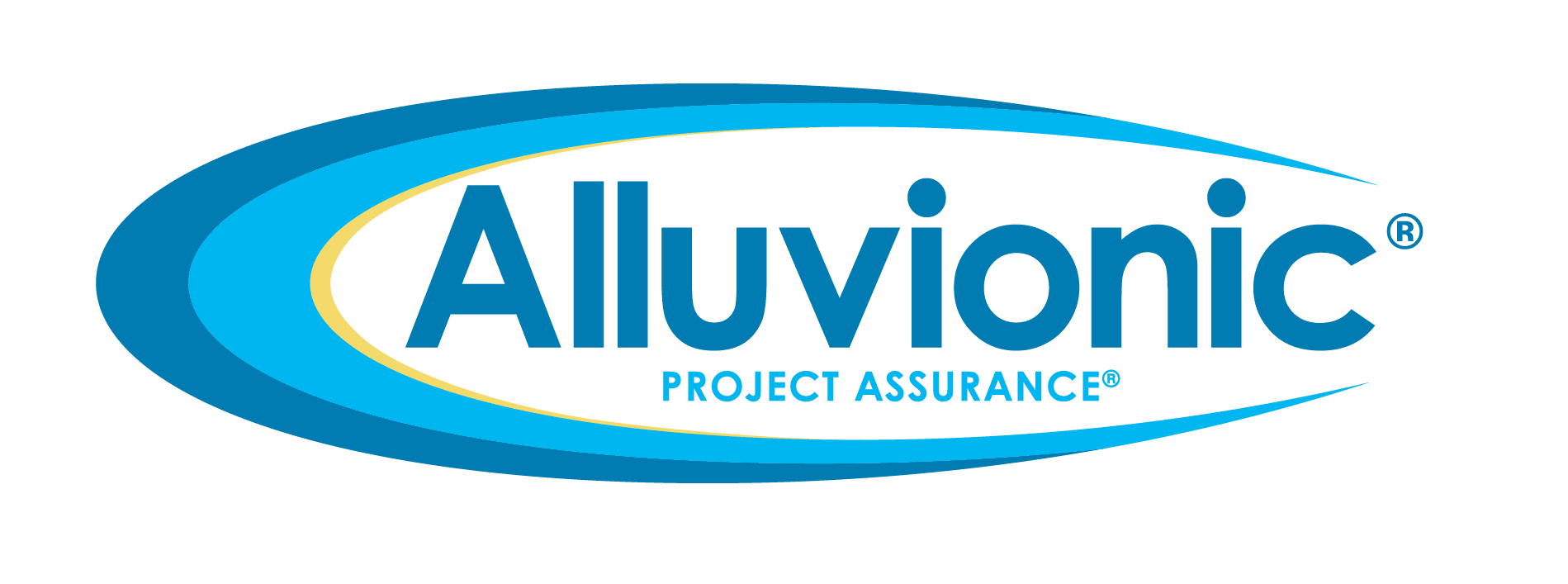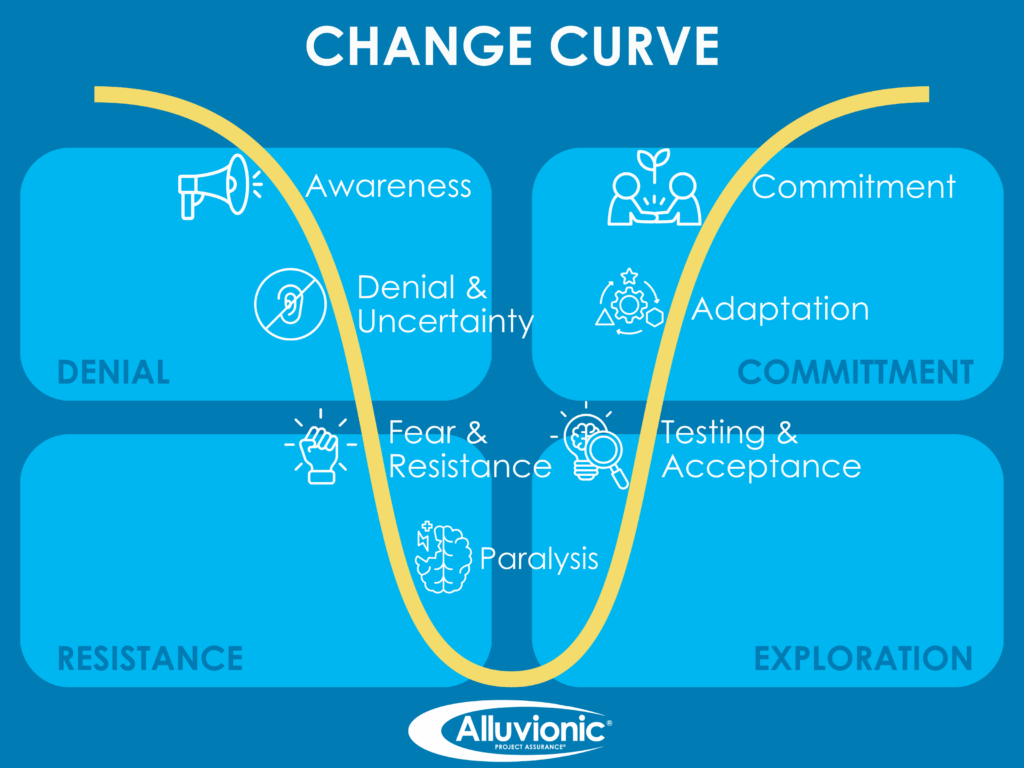Change. That little word that sparks excitement in leadership meetings and fear in just about everyone else. That’s where Organizational Change Management (OCM) comes in. More than just a buzzword, when implemented effectively, OCM is a strategic tool that helps change actually stick.
At Alluvionic, our OCM expertise has been proven in complex, high-stakes environments—from multi-million-dollar ERP rollouts and enterprise PMO builds to modernizing military systems that support thousands of users.
Let’s break it down.
What Is OCM, Really?
OCM is the process of guiding individuals and teams through change in a way that reduces resistance and disruption. It’s not about fluffy team-building exercises or endless PowerPoints trying to convince you that change is a good thing. It’s a thoughtful mix of communication, planning, leadership engagement, and training tailored to the needs of the people impacted by the change.
Good change management doesn’t slow things down, but rather, it ensures your investments pay off.
A Proven Framework: The ADKAR® Model
Most change efforts fail because people aren’t brought along for the ride. That’s why we use the Prosci ADKAR® model—a practical framework that focuses on five stages:
- Awareness of the need for change
- Desire to participate in the change
- Knowledge on how to change
- Ability to implement new skills and behaviors
- Reinforcement to sustain the change
It’s less about theory and more about real steps that teams can follow.
The Real Path to Change: It’s Not Always a Straight Line
Every team reacts to change differently. And those reactions follow a fairly predictable journey. The Change Curve helps us understand how people react to change over time, both emotionally and behaviorally. It’s not linear, and it’s rarely smooth. But it is predictable.
It begins with Awareness, where people first learn something is shifting. That quickly moves into Denial and Uncertainty, a stage where many tune out or question if change is really necessary. As reality sets in, Fear and Resistance often emerge, followed by a low point—Paralysis—where motivation dips and progress stalls.
That’s not failure. It’s normal.
The curve begins to rise again with Testing and Acceptance, as people cautiously try new processes and start seeing potential. With the right support, they enter Adaptation, finding new routines, and finally reach Commitment, where the change feels natural and fully adopted.
Recognizing where your team is on this curve helps you respond with empathy, timing, and targeted support—key pillars of effective OCM.
Real Talk: What Happens Without OCM?
Imagine rolling out a brand-new enterprise system—millions invested, timelines met—and on launch day, no one knows how to log in. The help desk floods with tickets, employees default to old habits, and leadership starts questioning everything. That’s the fallout of skipping OCM.
But it’s not just about operational misfires. Poor change management takes a toll on people. Unclear expectations lead to frustration, anxiety, and burnout. Morale drops, trust erodes, and even your top performers may disengage.
Without a structured approach, confusion spreads, resistance deepens, and momentum stalls. You’ll hear, “Wait, we’re doing what now?” more often than, “Let’s make this work.”
OCM is the foundation for successful, sustainable change. It gives your team clarity, confidence, and a clear path forward.
A Real-Life Scenario: OCM in Action
Take ACME Solutions, a mid-sized software company ready to overhaul its outdated HR system. Rather than treating it as a back-end IT upgrade, the team embraced OCM from day one and it made all the difference.
Before launch, they didn’t just inform employees, they engaged them. Leaders hosted informal “coffee chats” to answer questions and ease anxieties. A lighthearted internal campaign called “HR’s Heroes” featured spotlight stories of early adopters and frontline managers championing the new system.
To make training stick, they avoided generic slide decks and instead used interactive walkthroughs, short video tutorials, and role-based practice sessions. Employees could see exactly how their daily tasks would change and improve.
On launch day, floor ambassadors (team members trained in advance) wore badges so colleagues knew who to ask for help. A “digital kudos board” let staff celebrate quick wins and recognize teammates adjusting well.
Because they planned for reinforcement, the transition didn’t stop at go-live. Weekly feedback loops, quick tip videos, and follow-up support ensured the system wasn’t just installed, it was adopted.
The result? Fewer support tickets, faster onboarding, and a workforce that felt involved not blindsided. That’s the power of proactive, people-first change management.
Practical Tips to Start Using OCM Today
- Start with Why
Before you roll out any change, explain why it matters. People aren’t robots, they need context. - Communicate Like a Human
Change brings real emotions—frustration, confusion, even grief over lost tools. Don’t gloss over it. Be upfront about what’s changing and why, including any trade-offs. Skip the jargon. Use plain language, quick videos, and even humor to make info stick. Open Q&As, intranet posts, and team chats turn resistance into conversation and help people feel heard, not sidelined.
- Engage the Right People Early
Don’t wait until go-live to bring people on board. Involve key leaders who set the tone, front-line champions who influence peers, and end users who know the day-to-day reality. Their early feedback surfaces risks, builds ownership, and turns passive recipients into active partners in the change. - Training Isn’t Optional
People need to feel confident using new tools or following new processes. Short videos, hands-on sessions, and quick guides go a long way. - Reinforce and Celebrate Wins
A change is only successful if it sticks. Acknowledge milestones. Share success stories. Keep the momentum going.
Final Thoughts
Life throws a lot of change at people—at work and everywhere else. You never see the full weight someone’s carrying, and everyone has a limit. When teams feel heard and supported, change feels less like a disruption and more like a chance to grow.
At Alluvionic, we’ve guided clients through major transitions without the typical chaos. Our tailored OCM support blends award-winning project management with real-world practicality.
Want to see how OCM can support your next big initiative? Explore our Process Improvement Services or contact us to get started.





